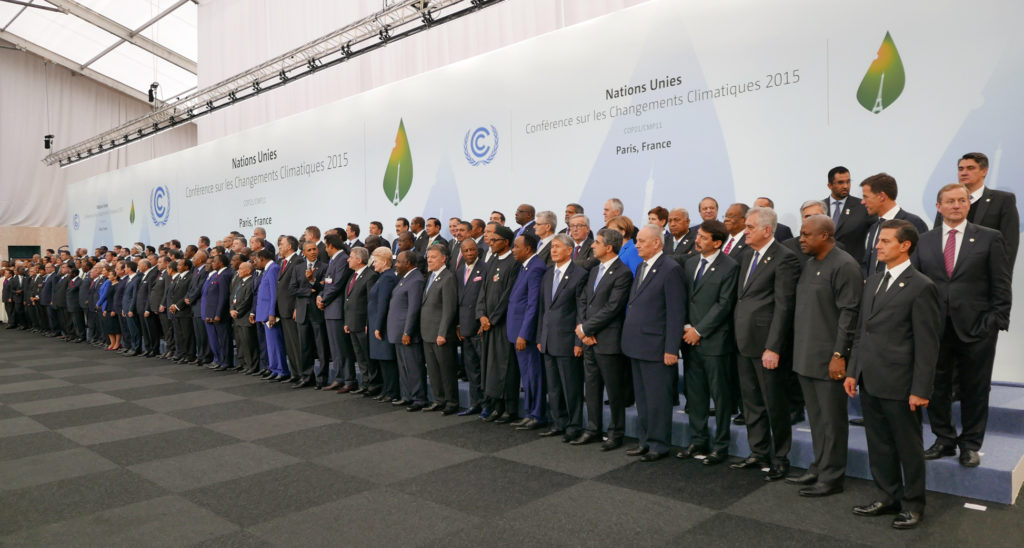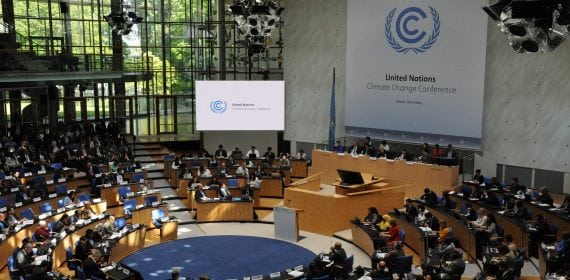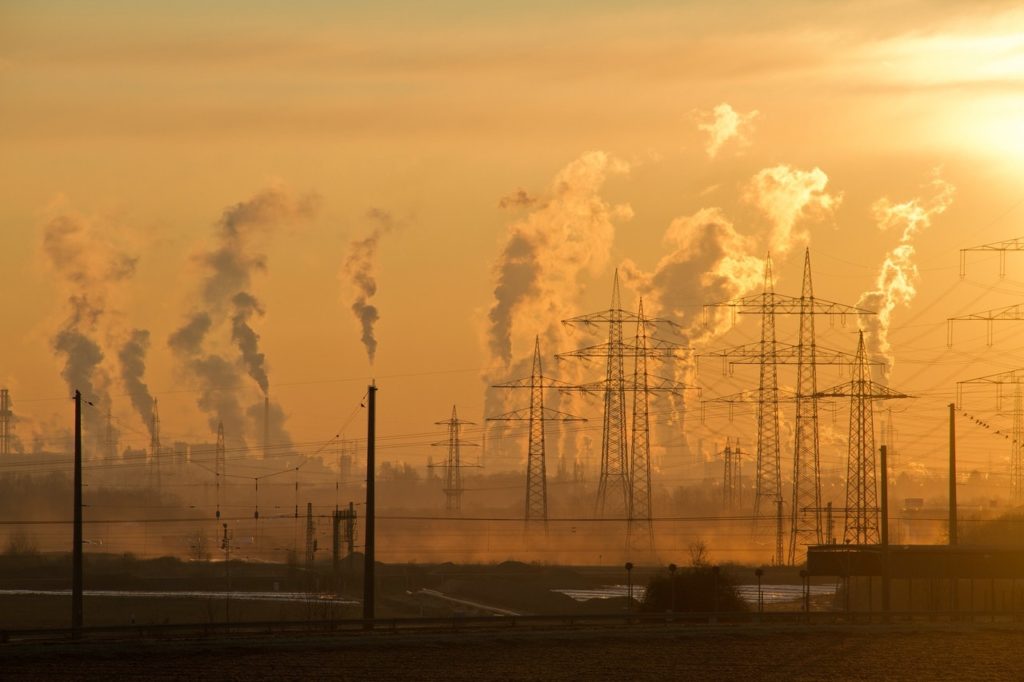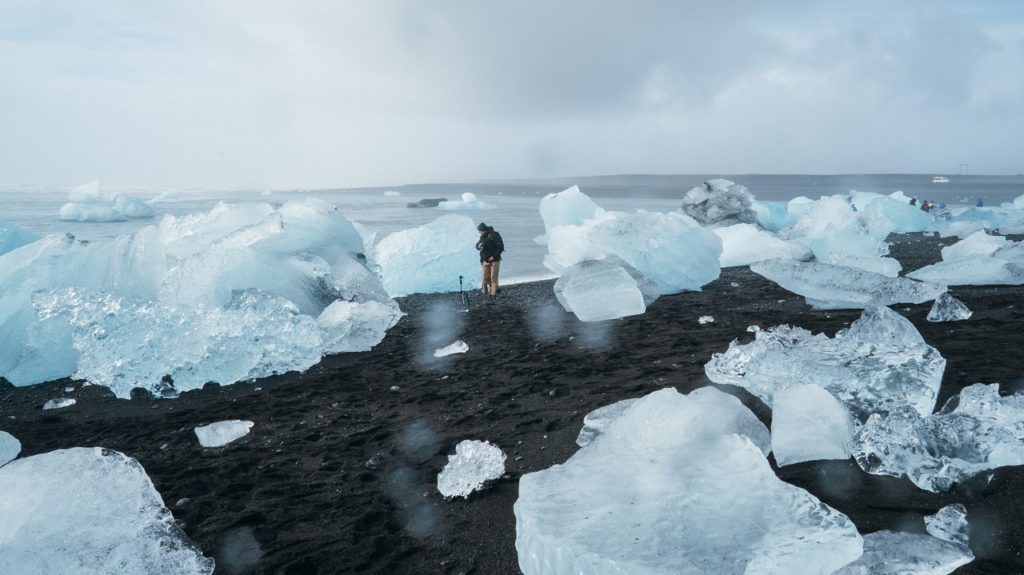What is the Conference of Parties COP?
A COP is the supreme decision-making body of any international convention. All States that are Parties to the Convention are represented at the COP, at which they review the implementation of the Convention and any other legal instruments that the COP adopts and take decisions necessary to promote the effective implementation of the Convention, including institutional and administrative arrangements. A key task for the COP is to review the national communications and emission inventories submitted by Parties. Based on this information, the COP assesses the effects of the measures taken by Parties and the progress made in achieving the ultimate objective of the Convention. Conventions with a COP include:

- United Nations Framework Convention on Climate Change
- United Nations Climate Change Conference
- United Nations Convention to Combat Desertification
- United Nations Convention against Corruption
- Convention on the Conservation of Migratory Species of Wild Animals
- Convention on International Trade in Endangered Species of Wild Fauna and Flora
- Convention on Biological Diversity
- Ramsar Convention
- Basel Convention
- Rotterdam Convention
- Stockholm Convention on Persistent Organic Pollutants
- Treaty on the Non-Proliferation of Nuclear Weapons
- Chemical Weapons Convention
- Kyoto Protocol
- WHO Framework Convention on Tobacco Control
COP UNFCCC: The Conference of Parties (COP) is the apex decision-making body of the United Nations Climate Change Framework Convention (UNFCCC). The UNFCCC was formed in 1994 to stabilize the greenhouse gas emissions and to protect the earth from the threat of climate change. The first conference was held in 1995 in Berlin. COP members have been meeting every year since the year 1995. As of 2019, the number of member countries in the UNFCCC has reached 197.

The Conference of Parties 1 (COP 1)1995: Berlin, Germany
The first UNFCCC Conference of the Parties took place in Berlin, Germany. It voiced concerns about the adequacy of countries’ abilities to meet commitments under the Body for Scientific and Technological Advice (BSTA) and the Subsidiary Body for Implementation (SBI). COP 1 agreed on “Activities Implemented Jointly”, first joint measures in international climate action.
The Conference of Parties 2 (COP 2)1996:, Geneva, Switzerland
The second Conference of Parties took place in Geneva, Switzerland. Several scientific assessments were carried out like consideration of the second assessment report of the Intergovernmental Panel on Climate Change, and the economic and social dimensions of climate change. It accepted the scientific findings on climate change proffered by the Intergovernmental Panel on Climate Change (IPCC) in its second assessment (1995). It rejected uniform “harmonized policies” in favor of flexibility and called for “legally binding mid-term targets”.
The Conference of Parties 3 (COP 3)1997: Kyoto, Japan
The third Conference of Parties COP 3 took place in Kyoto, Japan. Over 10,000 participants, including representatives from governments, intergovernmental organizations, NGOs and the press, attended the Conference, which included a high-level segment featuring statements from over 125 ministers. Following a week and a half of intense formal and informal negotiations, Parties to the FCCC adopted the Kyoto Protocol on 11 December. In the Kyoto Protocol, Parties in Annex I of the FCCC agreed to commitments with a view to reducing their overall emissions of six greenhouse gases (GHGs) by at least 5% below 1990 levels between 2008 and 2012. The protocol also establishes emissions trading, joint implementation between developed countries, and a “clean development mechanism” to encourage joint emissions reduction projects between developed and developing countries. Most industrialized countries and some central European economies in transition agreed to legally binding reductions in greenhouse gas emissions of an average of 6 to 8% below 1990 levels between the years 2008–2012, defined as the first emissions budget period.
You can read more about the The Conference of Parties COP 3 here: https://unfccc.int/cop3/
The Conference of Parties 4 (COP 4) 1998: Buenos Aires, Argentina
The Conference of Parties COP 4 took place in in Buenos Aires, Argentina. It was aimed at the unresolved issues in Kyoto. However agreements on these issues couldn’t be reached and instead the parties adopted a 2-year “Plan of Action” to advance efforts and to devise mechanisms for implementing the Kyoto Protocol, to be completed by 2000. During COP4, Argentina and Kazakhstan expressed their commitment to take on the greenhouse gas emissions reduction obligation, the first two non-Annex countries to do so.
You can read more about the The Conference of Parties COP 4 here: https://unfccc.int/process-and-meetings/conferences/past-conferences/buenos-aires-climate-change-conference-november-1998/cop-4
The Conference of Parties 5 (COP 5) 1999: Bonn, Germany
The Conference of Parties 5 (COP 5) took place in Bonn, Germany. Negotiations cantered on enabling decisions and a timetable for completing the outstanding details of the 1997 Kyoto Protocol by COP-6
You can read more about the The Conference of Parties COP 5 here: https://unfccc.int/process-and-meetings/conferences/past-conferences/bonn-climate-change-conference-october-1999/cop-5
The Conference of Parties 6 (COP 6)2000: Hague, Netherlands
The Conference of Parties 6 (COP 6)took place in The Hague, Netherlands. A major controversy erupted over the United States’ proposal to allow credit for carbon “sinks” in forests and agricultural lands that would satisfy a major proportion of the U.S. emissions reductions. There were also disagreements over consequences for non-compliance by countries that did not meet their emission reduction targets; and difficulties in resolving how developing countries could obtain financial assistance to deal with adverse effects of climate change and meet their obligations to plan for measuring and possibly reducing greenhouse gas emissions. Consequently the talks in The Hague collapsed to be resumed in Bonn, Germany
You can read more about the The Conference of Parties COP 6-1 here: https://unfccc.int/process-and-meetings/conferences/past-conferences/the-hague-climate-conference-november-2000/cop-6

The Conference of Parties 6 (COP 6)2001: Bonn, Germany
COP 6 negotiations resumed on 17–27 July 2001, in Bonn, Germany. The US had by then rejected the Kyoto Protocol and the United States delegation to this meeting declined to participate in the negotiations related to the Protocol and chose to take the role of observer at the meeting. As the other parties negotiated the key issues, agreement was reached on most of the major political issues. The agreements included:
Flexible mechanisms: The “flexibility mechanisms” including emissions trading, joint implementation (JI) and the Clean Development Mechanism (CDM) which allows industrialized countries to fund emissions reduction activities in developing countries as an alternative to domestic emission reductions. One of the key elements of this agreement was that there would be no quantitative limit on the credit a country could claim from use of these mechanisms provided domestic action constituted a significant element of the efforts of each Annex B country to meet their targets.
Carbon sinks: It was agreed that credit would be granted for broad activities that absorb carbon from the atmosphere or store it, including forest and cropland management, and re-vegetation, with no over-all cap on the amount of credit that a country could claim for sinks activities.
Compliance: Final action on compliance procedures and mechanisms that would address non-compliance with Protocol provisions was deferred to COP 7, but included broad outlines of consequences for failing to meet emissions targets that would include a requirement to “make up” shortfalls, suspension of the right to sell credits for surplus emissions reductions, and a required compliance action plan for those not meeting their targets.
Financing: There was agreement on the establishment of three new funds to provide assistance for needs associated with climate change: (1) a fund for climate change that supports a series of climate measures; (2) a least-developed-country fund to support National Adaptation Programs of Action; and (3) a Kyoto Protocol adaptation fund supported by a CDM levy and voluntary contributions.
A number of operational details attendant upon these decisions remained to be negotiated and agreed upon, and these were the major issues considered by the COP 7 meeting that followed.
You can read more about the The Conference of Parties COP 6-2 here: https://unfccc.int/process-and-meetings/conferences/past-conferences/bonn-climate-change-conference-july-2001/cop-6-2
The Conference of Parties 7 (COP 7) 2001: Marrakech, Morocco
The Conference of Parties 7 (COP 7) meeting was held in in Marrakech, Morocco. The work on the Buenos Aires Plan of Action was finalized setting the stage for nations to ratify the Kyoto Protocol. The completed package of decisions is known as the Marrakech Accords. The United States delegation maintained its observer role, declining to participate actively in the negotiations. Other parties continued to express hope that the United States would re-engage in the process at some point and worked to achieve ratification of the Kyoto Protocol by the requisite number of countries to bring it into force (55 countries needed to ratify it, including those accounting for 55% of developed-country emissions of carbon dioxide in 1990). The date of the World Summit on Sustainable Development (August–September 2002) was put forward as a target to bring the Kyoto Protocol into force. The World Summit on Sustainable Development (WSSD) was to be held in Johannesburg, South Africa.
The main decisions at COP 7 included:
- Operational rules for international emissions trading among parties to the Protocol and for the CDM and joint implementation
- A compliance regime that outlined consequences for failure to meet emissions targets but deferred to the parties to the Protocol, once it came into force, the decision on whether those consequences would be legally binding
- Accounting procedures for the flexibility mechanisms
You can read more about the The Conference of Parties COP 7 here: https://unfccc.int/process-and-meetings/conferences/past-conferences/marrakech-climate-change-conference-october-2001/cop-7
The Conference of Parties 8 (COP 8) 2002: New Delhi, India
The Conference of Parties 8 (COP 8) took place from 23 October to 1 November 2002, in New Delh. It adopted the Delhi Ministerial Declaration that, amongst others, called for efforts by developed countries to transfer technology and minimize the impact of climate change on developing countries. It is also approved the New Delhi work programme on Article 6 of the Convention. The Kyoto Protocol could enter into force once it was ratified by 55 countries, including countries responsible for 55 per cent of the developed world’s 1990 carbon dioxide emissions. With the United States (36.1 per cent share of developed-world carbon dioxide) and Australia refusing ratification, Russia’s agreement (17% of global emissions in 1990) was required to meet the ratification criteria and therefore Russia could delay the process.
You can read more about the The Conference of Parties COP 8 here: https://unfccc.int/process-and-meetings/conferences/past-conferences/new-delhi-climate-change-conference-october-2002/cop-8
UNFCCC Conference of Parties Article 6: Article 6 of the Convention seeks to reduce the impact of climate change by enabling society to be a part of the solution. Education and training are integral in enabling citizens’ contributions to local and global efforts to meet the climate change challenge. Increased knowledge and learning about the causes and impacts of climate change affect everyday lives. People become more aware of their role as consumers and are empowered to make ethically informed decisions. Communities can contribute to a solution-oriented public dialogue, while engaging local decision-makers in taking meaningful action and shaping climate policy. Article 6 of the Convention is a useful resource for governments, civil society and many others. It encourages people to take the lead and cooperate in creative climate change education and training. The mandate of Article 6 calls for initiatives that are diverse, innovative and resource-efficient. They can include practical action in formal and informal education and training. These initiatives may cut across different types of learning, from preschooler classes and seminar rooms of universities, to vocational training and lifelong learning. Education profoundly impacts the lives of people and ultimately the well-being of the environment. Over the last three decades, governments and civil society stakeholders have been developing national education strategies that are climate sensitive and integrate goals on sustainable development. Climate change educational initiatives have been exceptionally diverse. A number of governments have successfully supported teacher training initiatives and integrated climate change education in all levels of school curricula. Other initiatives have broken new ground in informal education, nurturing community-learning enterprises and hubs that build on the capacity of people to experiment and innovate. Climate change presents a complex global problem and crosses national borders. Climate change is complex in that it is connected to many other issues from global poverty and social inequality to biodiversity loss and natural resource depletion. This complexity makes climate literacy and awareness of what it takes to shape a low-emissions and equitable future pressing. As societies collectively shape a climate resilient and low-emission future, training for all sectors of professional life are increasingly important. Training is a social and collaborative process, whether it comprises vocational learning or on-the-job skills enhancement. At an individual level, training means acquiring know-how and the creative ingredients needed to make climate-conscious decisions. At an organizational level, training strengthens the capacities of governmental, private sector, non-governmental and international organizations, among other stakeholders, to try strategies and encourage climate-smart institutional cultures. Training is about learning by doing. Far from comprising a one-way flow of knowledge, effective training strategies and initiatives encourage groups to experiment with what works best for them. Whether it encourages farmers to try climate-resilient crops or equips businesses with the means to source sustainably procured raw materials, training provides knowledge that can be creatively tried, tested and used widely when proven effective. Moreover, training initiatives have a strong multiplier effect. Strategies and projects with a strong train-the-trainer element can ensure that best practices travel fast and can be scaled up from local to national and regional levels.
The Conference of Parties 9 (COP 9): 2003, Milan, Italy
The Conference of Parties 9 (COP 9) took place on 1–12 December 2003 in Milan, Italy. The parties agreed to use the Adaptation Fund established at COP7 in 2001 primarily in supporting developing countries better adapt to climate change. The fund would also be used for capacity-building through technology transfer.
You can read more about the The Conference of Parties COP 9 here: https://unfccc.int/process-and-meetings/conferences/past-conferences/milan-climate-change-conference-december-2003/cop-9
The Conference of Parties 10 (COP 10): 2004: Buenos Aires, Argentina
The Conference of Parties 10 (COP 10) discussed the progress made since the first Conference of the Parties 10 years ago and its future challenges, with special emphasis on climate change mitigation and adaptation. To promote developing countries better adapt to climate change, the Buenos Aires Plan of Action was adopted. The parties also began discussing the post-Kyoto mechanism, on how to allocate emission reduction obligation following 2012, when the first commitment period ends.
You can read more about the The Conference of Parties COP 10 here: https://unfccc.int/process-and-meetings/conferences/past-conferences/buenos-aires-climate-change-conference-december-2004/cop-10
The Conference of Parties 11 (COP 11): 2005: Montreal, Canada
The Conference of Parties 11 (COP 11) took place between 28 November and 9 December 2005, in Montreal, Quebec, Canada. It was the first Conference of the Parties serving as the Meeting of the Parties to the Kyoto Protocol (CMP 1) since their initial meeting in Kyoto in 1997. It was one of the largest intergovernmental conferences on climate change ever. The event marked the entry into force of the Kyoto Protocol. The Montreal Action Plan was an agreement to “extend the life of the Kyoto Protocol beyond its 2012 expiration date and negotiate deeper cuts in greenhouse-gas emissions.
You can read more about the The Conference of Parties COP 11 here: https://unfccc.int/process-and-meetings/conferences/past-conferences/montreal-climate-change-conference-december-2005/cop-11
The Conference of Parties 12 (COP 12): Nairobi, Kenya
The Conference of Parties 12 (COP 12) took place on 6–17 November 2006 in Nairobi, Kenya. The parties adopted a five-year plan of work to support climate change adaptation by developing countries, and agreed on the procedures and modalities for the Adaptation Fund. They also agreed to improve the projects for clean development mechanism.
You can read more about the The Conference of Parties COP 12 here: https://unfccc.int/process-and-meetings/conferences/past-conferences/nairobi-climate-change-conference-november-2006/cop-12
The Conference of Parties 13 (COP 13): 2007: Bali, Indonesia
The Conference of Parties 13 (COP 13) took place in December 2007, at Nusa Dua, in Bali, Indonesia. Agreement on a timeline and structured negotiation on the post-2012 framework (the end of the first commitment period of the Kyoto Protocol) was achieved with the adoption of the Bali Action.
You can read more about the The Conference of Parties COP 13 here: https://unfccc.int/process-and-meetings/conferences/past-conferences/bali-climate-change-conference-december-2007/cop-13
The Conference of Parties 14 (COP 14): 2008, Poznan Poland
The Conference of Parties 14 (COP 14) took place in December 2008 in Poznań, Poland. Delegates agreed on principles for the financing of a fund to help the poorest nations cope with the effects of climate change and they approved a mechanism to incorporate forest protection into the efforts of the international community to combat climate change. Negotiations on a successor to the Kyoto Protocol were the primary focus of the conference.
You can read more about the The Conference of Parties COP 14 here: https://unfccc.int/process-and-meetings/conferences/past-conferences/poznan-climate-change-conference-december-2008/cop-14
The Conference of Parties 15 (COP 15): 2009: Copenhagen, Denmark
The Conference of Parties 15 (COP 15) took place in Copenhagen, Denmark Ministers and officials from 192 countries took part in the Copenhagen meeting and in addition there were participants from a large number of civil society organizations. The conference did not achieve a binding agreement for long-term action. A 13-paragraph ‘political accord’ was negotiated by approximately 25 parties including US and China, but it was only ‘noted’ by the COP as it is considered an external document, not negotiated within the UNFCCC process. The accord was notable in that it referred to a collective commitment by developed countries for new and additional resources, including forestry and investments through international institutions.
You can read more about the The Conference of Parties COP 15 here: https://unfccc.int/process-and-meetings/conferences/past-conferences/copenhagen-climate-change-conference-december-2009/cop-15
The Conference of Parties 16 (COP 16): 2010: Cancún, Mexico
The Conference of Parties 16 (COP 16) was held in Cancún, Mexico. The outcome of the summit was an agreement adopted by the states’ parties that called for the US$100 billion per annum “Green Climate Fund”, and a “Climate Technology Centre” and network. However the funding of the Green Climate Fund was not agreed upon. Nor was a commitment to a second period of the Kyoto Protocol agreed upon, but it was concluded that the base year shall be 1990 and the global warming potentials shall be those provided by the IPCC. It recognized the IPCC Fourth Assessment Report goal of a maximum 2 °C global warming and all parties should take urgent action to meet this goal. It also agreed upon greenhouse gas emissions should peak as soon as possible, but recognizing that the time frame for peaking will be longer in developing countries, since social and economic development and poverty eradication are the first and overriding priorities of developing countries.
You can read more about the The Conference of Parties COP 16 here: https://unfccc.int/process-and-meetings/conferences/past-conferences/cancun-climate-change-conference-november-2010/cop-16
The Conference of Parties 17 (COP 17): 2011, Durban, South Africa
The Conference of Parties 17 (COP 17) was held in Durban, South Africa. The conference agreed to a start negotiations on a legally binding deal comprising all countries, to be adopted in 2015, governing the period post 2020. There was also progress regarding the creation of a Green Climate Fund (GCF) for which a management framework was adopted. The fund is to distribute US$100 billion per year to help poor countries adapt to climate impacts.
You can read more about the The Conference of Parties COP 17 here: https://unfccc.int/process-and-meetings/conferences/past-conferences/durban-climate-change-conference-november-2011/cop-17
The Conference of Parties 18 (COP 18): 2012, Doha, Qatar
The Conference of Parties 18 (COP 18) took place in Doha, Qatar. The Conference produced a package of documents collectively titled The Doha Climate Gateway. The documents collectively contained: The Doha Amendment to the Kyoto Protocol (to be accepted before entering into force) featuring a second commitment period running from 2012 until 2020 limited in scope to 15% of the global carbon dioxide emissions due to the lack of commitments of Japan, Russia, Belarus, Ukraine, New Zealand (nor the United States and Canada, who are not parties to the Protocol in that period) and due to the fact that developing countries like China (the world’s largest emitter), India and Brazil are not subject to emissions reductions under the Kyoto Protocol. The conference reached an agreement to extend the life of the Kyoto Protocol, which had been due to expire at the end of 2012, until 2020, and to reify the 2011 Durban Platform, meaning that a successor to the Protocol is set to be developed by 2015 and implemented by 2020. Wording adopted by the conference incorporated for the first time the concept of “loss and damage”, an agreement in principle that richer nations could be financially responsible to other nations for their failure to reduce carbon emissions. The conference made little progress towards the funding of the Green Climate Fund.
You can read more about the The Conference of Parties COP 18 here: https://unfccc.int/process-and-meetings/conferences/past-conferences/doha-climate-change-conference-november-2012/cop-18
The Conference of Parties 19 (COP 19): 2013, Warsaw, Poland
The Conference of Parties 19 (COP 19) was held in Warsaw, Poland from 11 to 23 November 2013. The conference led to an agreement that all states would start cutting emissions as soon as possible, but preferably by the first quarter of 2015. The term Intended Nationally Determined Contributions was coined in Warsaw upon a proposal from Singapore. The Warsaw International Mechanism was also proposed.
You can read more about the The Conference of Parties COP 19 here: https://unfccc.int/process-and-meetings/conferences/past-conferences/warsaw-climate-change-conference-november-2013/cop-19
The Conference of Parties 20 (COP 20): 2014, Lima, Peru
The Conference of Parties 20 (COP 20) was held in Lima, Peru. An agreement was reached in which all countries will specify their objectives under INDC. If they are ready, and they will submit their CO2 emissions information by March 2015. A controversial issue which affected negotiations between developed and developing countries was the Common But Differentiated Responsibilities (CBDR). COP20 was unable to define how the emissions reductions would be distributed among the countries. This issue will be addressed at COP21 in Paris. Funding for the Green Climate Fund slightly exceeded the target, reaching 10.2 billion dollars. The fund will enable developing countries to apply a range of technologies to combat climate change. There are also plans to roll out a Private Sector Facility in 2015 to ensure that private sector entities can be accredited and access the fund.
You can read more about the The Conference of Parties COP 20 here: https://unfccc.int/process-and-meetings/conferences/past-conferences/lima-climate-change-conference-december-2014/cop-20
The Conference of Parties 21 (COP 21): 2015, Paris, France
The Conference of Parties 21 (COP 21) was held in Paris from 30 November to 12 December 2015. A number of meetings took place in preparation for COP21, including the Bonn Climate Change Conference, 19 to 23 October 2015, which produced a draft agreement. Negotiations resulted in the adoption of the Paris Agreement on 12 December, governing climate change reduction measures from 2020. The agreement calls for zero net anthropogenic greenhouse gas emissions to be reached during the second half of the 21st century. The parties will also “pursue efforts to” limit the temperature increase to 1.5 °C. Prior to the conference, 146 national climate panels publicly presented a draft of national climate contributions (called “Intended Nationally Determined Contributions”, INDCs). The Agreement will not become binding on its member states until 55 parties who produce over 55% of the world’s greenhouse gas have ratified the Agreement. Each country that ratifies the agreement will be required to set a target for emission reduction or limitation, called a “nationally determined contribution,” or “NDC,” but the amount will be voluntary
You can read more about the The Conference of Parties COP 21 here: https://unfccc.int/process-and-meetings/conferences/past-conferences/paris-climate-change-conference-november-2015/cop-21

The Conference of Parties 22 (COP 22): 2016, Marrakech, Morocco
The Conference of Parties 22 (COP 22) was held in Marrakech, in the North-African country of Morocco. The conference incorporated the twenty-second Conference of the Parties (COP22), the twelfth meeting of the parties to the Kyoto Protocol (CMP12), and the first meeting of the parties to the Paris Agreement (CMA1). The purpose of the conference was to discuss and implement plans about combatting climate change and to demonstrate to the world that the implementation of the Paris Agreement is underway. Participants work together to come up with global solutions to climate change. A focal issue of COP 22 was that of water scarcity, water cleanliness, and water-related sustainability, a major problem in the developing world, including many African states.
You can read more about the The Conference of Parties COP 22 here: https://unfccc.int/process-and-meetings/conferences/past-conferences/marrakech-climate-change-conference-november-2016/cop-22
The Conference of Parties 23 (COP 23): 2017, Bonn, Germany
The Conference of Parties 23 (COP 23) was held on 6–17 November 2017. The purpose of the conference was to discuss and implement plans about combating climate change, including the details of how the Paris Agreement will work after it enters into force in 2020. Although COP23 focused primarily on technical details of the Paris Agreement, it was the first conference of the parties to take place after President Donald Trump announced that the U.S. would withdraw from the agreement. COP23 concluded with what was called the ‘Fiji Momentum for Implementation,’ which outlined the steps that need to be taken in 2018 to make the Paris Agreement operational and launched the Talanoa Dialogue – a process designed to help countries enhance and implement their Nationally Determined Contributions by 2020
You can read more about the The Conference of Parties COP 23 here: https://unfccc.int/process-and-meetings/conferences/un-climate-change-conference-november-2017/sessions-of-negotiating-bodies/cop-23
The Conference of Parties 24 (COP 24): 2018, Katowice, Poland
The Conference of Parties 24 (COP 24) was held between 2 and 15 December 2018 in Katowice, Poland. The conference was marked by speeches of noted British naturalist Sir David Attenborough and 15 year-old climate change activist Greta Thunberg. After the United States left the Paris Agreement, China took a leading role by hosting many of the preparatory meetings in the weeks beforehand. The conference agreed on rules to implement the Paris Agreement, which will come into force in 2020, that is to say the rulebook on how governments will measure, and report on their emissions-cutting efforts
You can read more about the The Conference of Parties COP 24 here:https://unfccc.int/process-and-meetings/conferences/katowice-climate-change-conference-december-2018/sessions-of-negotiating-bodies/cop-24

The Conference of Parties 25 (COP 25): 2019, Madrid, Spain
The Conference of Parties 25 (COP 25) was held in Madrid, Spain, from 2 to 13 December 2019 under the presidency of the Chilean government. The conference was planned to be held in Brazil in November 2019, but a year before the planned start, newly-elected President Jair Bolsonaro withdrew the offer to host the event, citing economic reasons. Then Chile stepped up and became the new host, but social unrest in the lead up to the meeting forced it late October 2019 to withdraw from hosting. Then by mutual agreement between the UN, Chile, and Spain, the latter became the new host. The conference incorporated the 25th Conference of the Parties to the United Nations Framework Convention on Climate Change (UNFCCC), the 15th meeting of the parties to the Kyoto Protocol (CMP15), and the second meeting of the parties to the Paris Agreement (CMA2). The last part of the Paris regime that remains to be resolved is Article 6. This article describes rules for a carbon market and other forms of international cooperation. In the COP24 conference no agreement could be reached on this topic.
You can read more about the The Conference of Parties COP 25 here: https://unfccc.int/event/cop-25
The Conference of Parties 26 (COP 26):2020, Glasgow, United Kingdom
The Conference of Parties 26 (COP 26)COP 26 was scheduled to take place from 9 to 19 November 2020, in Glasgow, United Kingdom but has been postponed to an unspecified date in 2021 in light of the 2019-20 coronavirus pandemic.